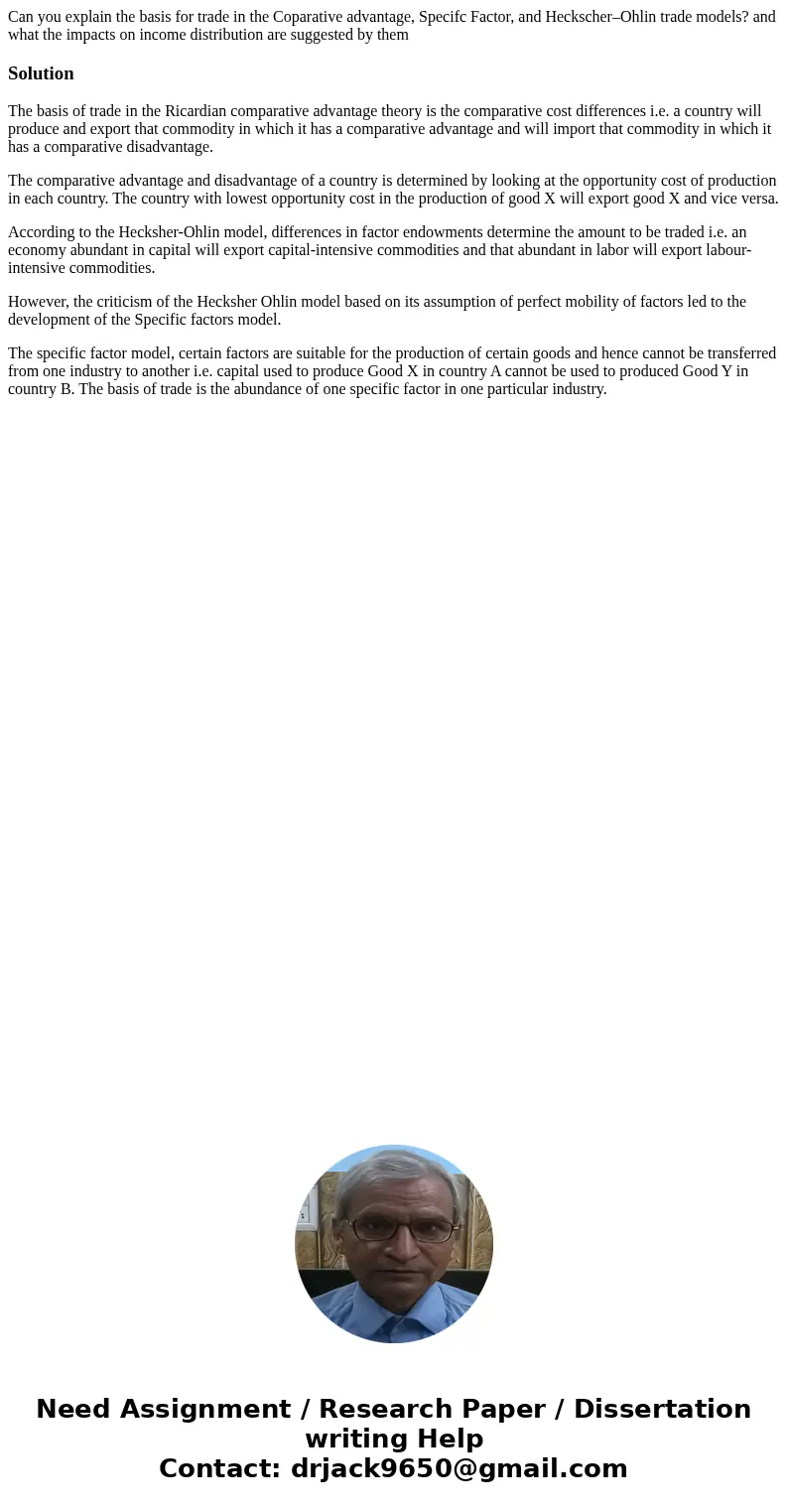Can you explain the basis for trade in the Coparative advant
Can you explain the basis for trade in the Coparative advantage, Specifc Factor, and Heckscher–Ohlin trade models? and what the impacts on income distribution are suggested by them
Solution
The basis of trade in the Ricardian comparative advantage theory is the comparative cost differences i.e. a country will produce and export that commodity in which it has a comparative advantage and will import that commodity in which it has a comparative disadvantage.
The comparative advantage and disadvantage of a country is determined by looking at the opportunity cost of production in each country. The country with lowest opportunity cost in the production of good X will export good X and vice versa.
According to the Hecksher-Ohlin model, differences in factor endowments determine the amount to be traded i.e. an economy abundant in capital will export capital-intensive commodities and that abundant in labor will export labour-intensive commodities.
However, the criticism of the Hecksher Ohlin model based on its assumption of perfect mobility of factors led to the development of the Specific factors model.
The specific factor model, certain factors are suitable for the production of certain goods and hence cannot be transferred from one industry to another i.e. capital used to produce Good X in country A cannot be used to produced Good Y in country B. The basis of trade is the abundance of one specific factor in one particular industry.

 Homework Sourse
Homework Sourse